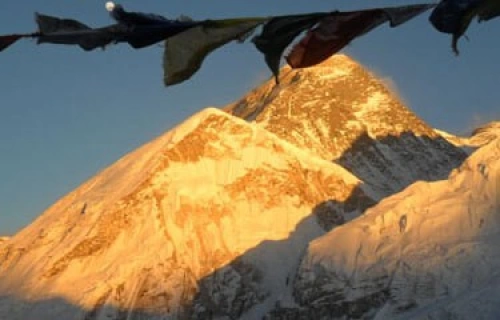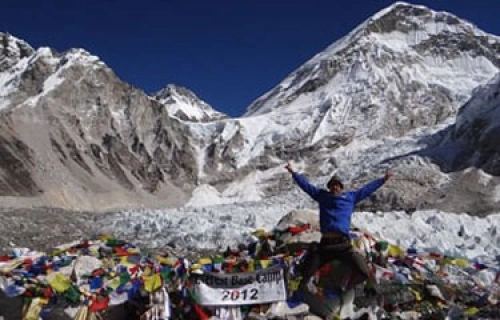When someone mentions 'Nepal', ‘Mount Everest’ automatically comes to mind. So, it is not surprising that treks to Everest Base Camp catches the attention of outdoor enthusiasts from all over the world. The Nepalese gave Everest the beautiful name, Sagarmatha, ‘Sagar’ meaning sky, and ‘matha’, forehead or head, a fitting title for their beloved ‘goddess of the sky’.
The rugged beauty of nature in the Everest Region is breathtaking. Besides Mt. Everest, 8848m, seven more mountains of over 7000 meters touches the skies. Deep rivers and glaciers cut the landscapes. Climbing higher into the Khumbu Region, vast pine and rhododendron forests give way to smaller scrub junipers, and finally short alpine shrubs, grass and wild flowers.
The Everest Region is rich in wildlife. Golden eagles vultures, yellow billed choughs and black ravens soar on the up-draughts. The forests are home to the wildlife such as rare snow tiger and red panda as well as the plentiful Himalayan tahr, musk deer and barking deer.
The Buddhist inhabitants have deep respect for nature which has played an important role in the preservation of the area. Additionally, it is enclosed in the Sagarmatha National Park, with laws to protect the environment and native species.
We step back in time when we enter the Sherpa villages. Simple stone lodges provide a warm welcome and an insight into a fascinating culture. Expressions of ancient Tibetan Buddhist faith are everywhere -- stupas representing the mind of Buddha, mani walls engraved with prayers, colorful prayer flags and monasteries.
A highlight of the Everest Region is to visit Tengboche Monastery, 3850m. Summit expeditions stop to seek the blessing of the gods at this amazing gompa which is built into a great hill overlooking Mt. Everest and Ama Dablam. There is a clear view of Mt. Everest from Tengboche.
At Everest Base Camp, the atmosphere is changed by summit expeditions setting out for the supreme challenge. Ironically, you can’t see Mt. Everest from base camp, but you do get a spectacular view of the Khumbu glacier below, with its ice fall, glacial ponds and icebergs.
For the ultimate view of Mount Everest, we return to Gorakshep and climb to Kala Pattar, 5545m.
Trekking in Everest region is possible throughout the year. However, the best time to visit is from the beginning of March to May and from the beginning of September to November. The winters are very cold and the summers are rainy. The rhododendron trees and wild flowers burst into bloom during April and early May which adds spectacular splashes of color to the Himalayan landscapes. And the clearest skies are later in the year, after the summer monsoon rains have settled the dust and everything is lush and green.

















